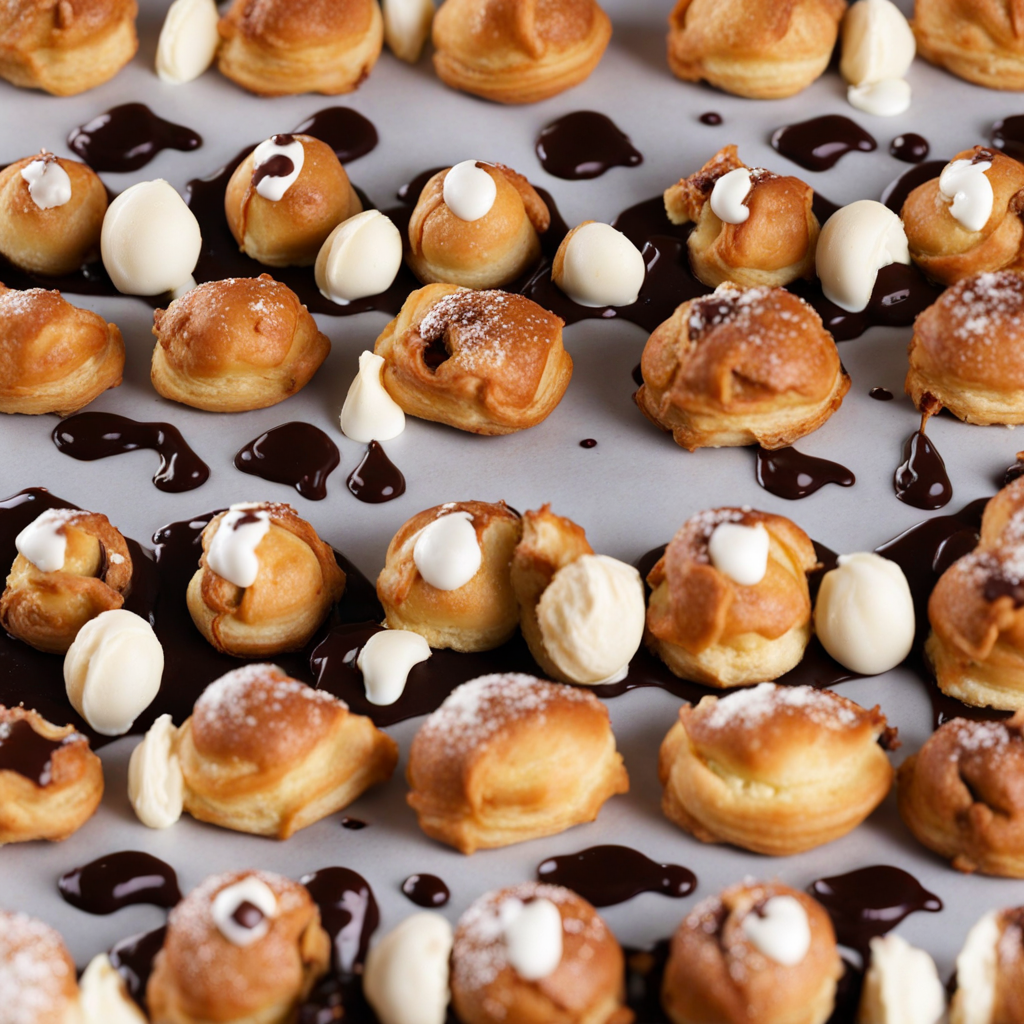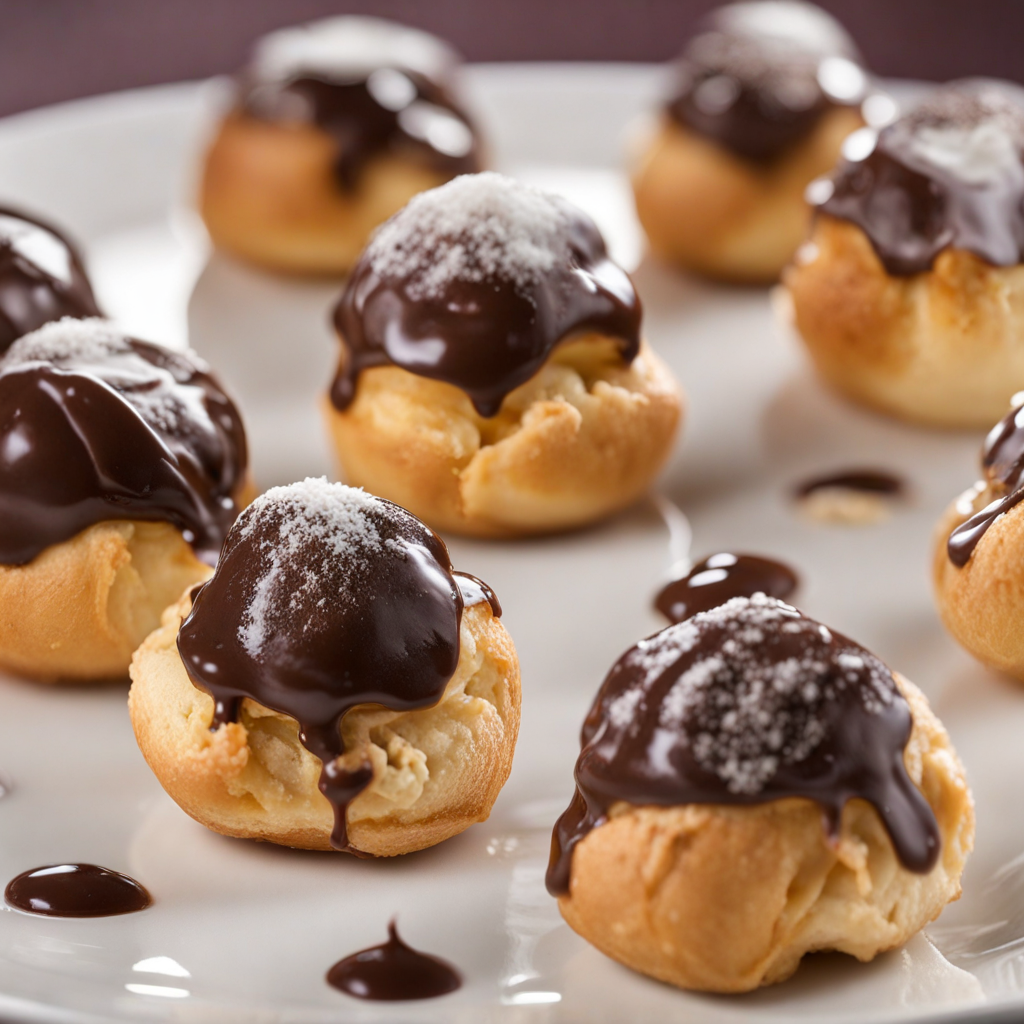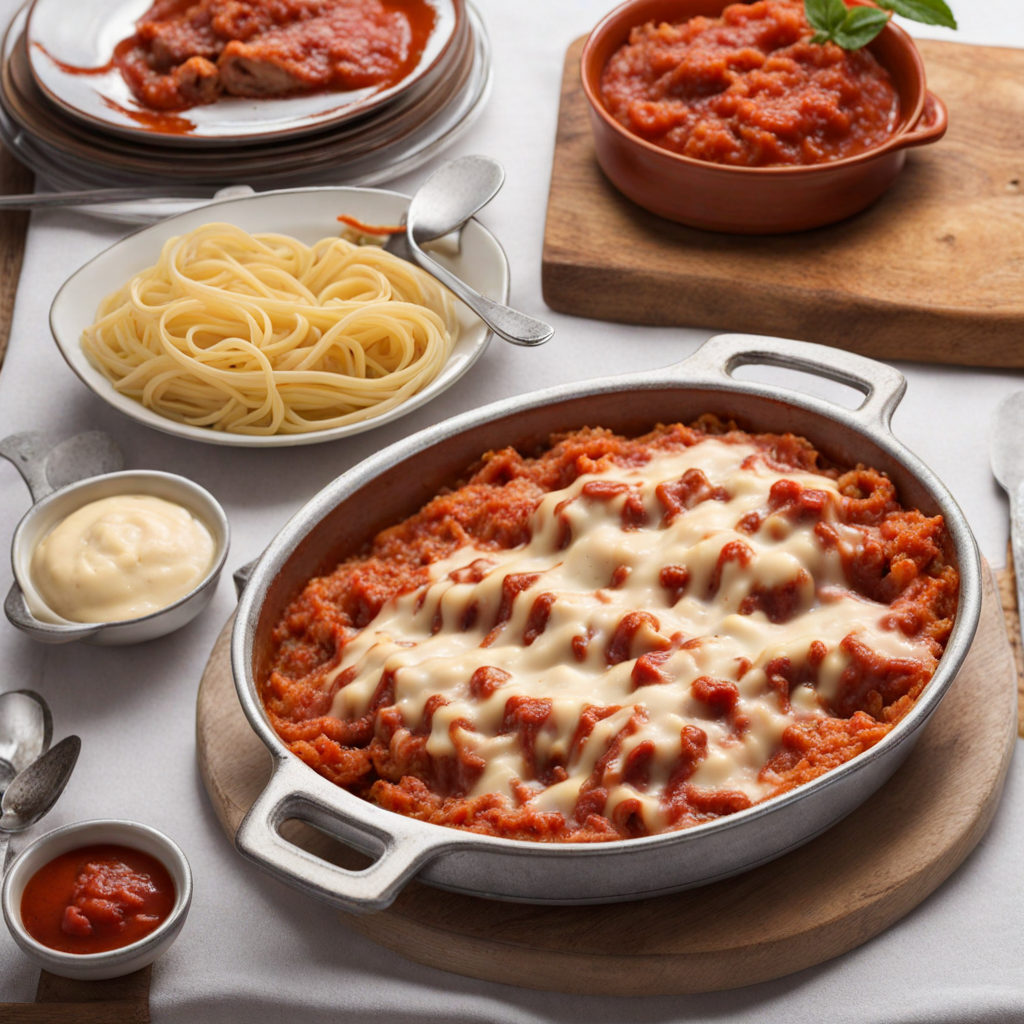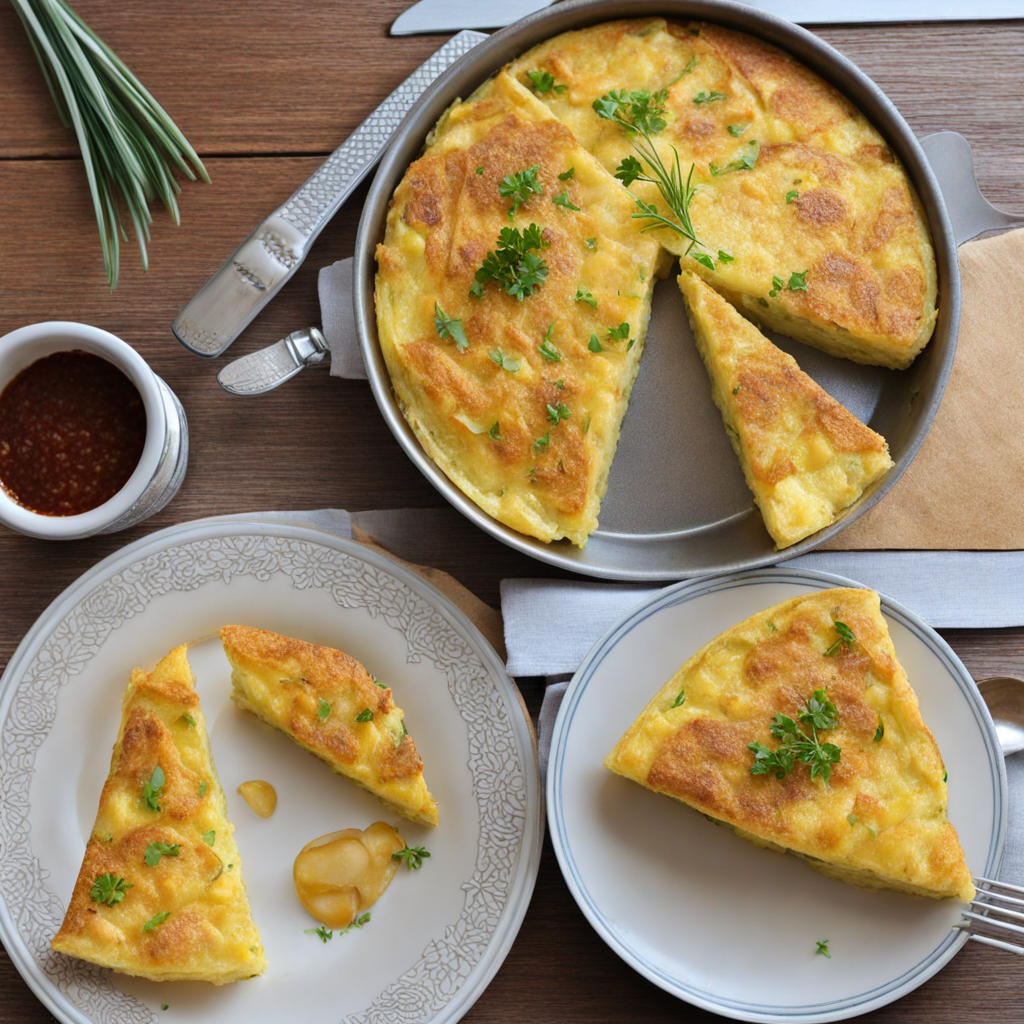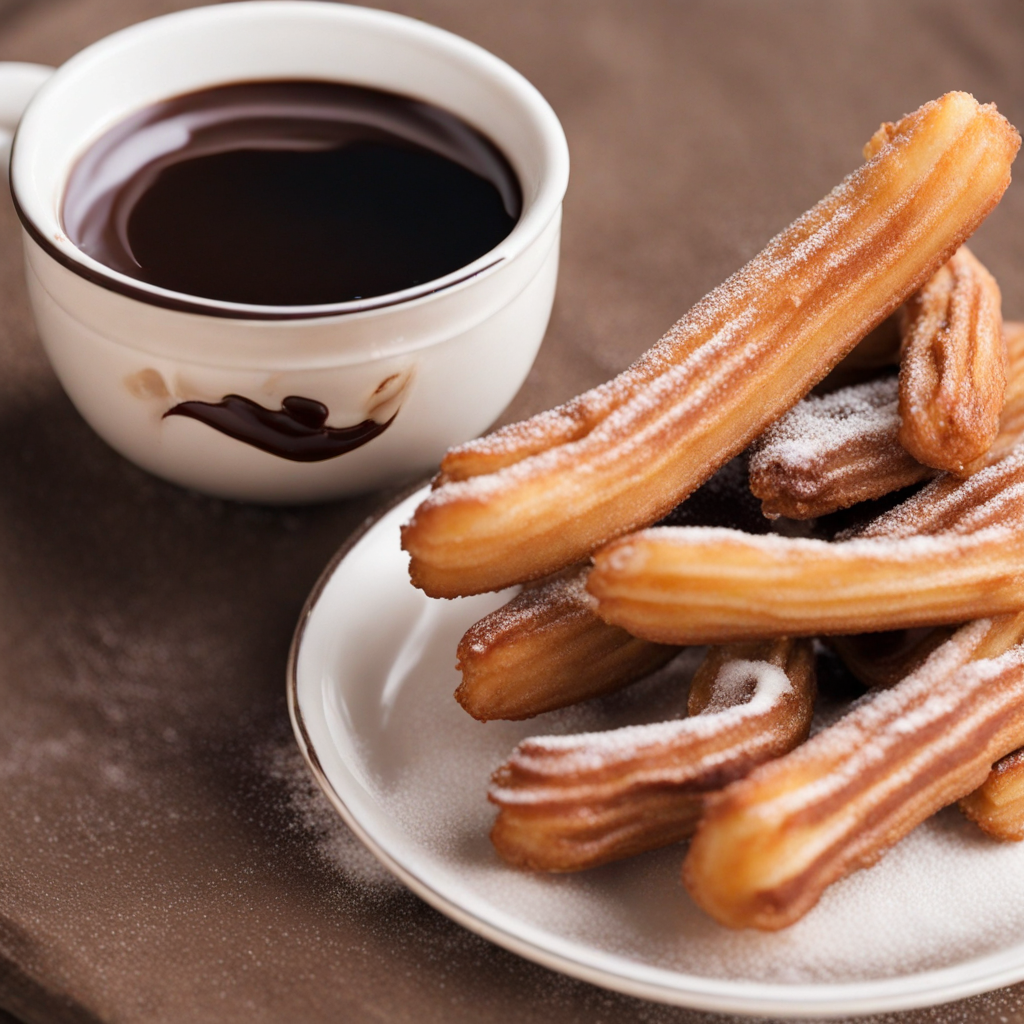Profiteroles
Profiteroles, a delightful confection originating from Gibraltar, are small, round pastries that are light and airy, typically made from choux pastry. This unique dough is created by cooking flour, water, butter, and eggs together, resulting in a texture that puffs up beautifully when baked. When you take a bite, the outer shell is crisp, while the inside is filled with a creamy custard or whipped cream, creating a perfect balance of textures that dance in your mouth. The subtle sweetness of the pastry complements the rich filling, making every bite a luxurious experience. Traditionally, profiteroles in Gibraltar are often drizzled with a rich chocolate sauce, adding a decadent touch that elevates the entire dessert. The warm, melting chocolate contrasts with the cool, creamy filling, creating an indulgent treat that’s hard to resist. Some variations may include flavored creams, such as vanilla, coffee, or even fruit-infused options, allowing for an array of taste experiences. Each variation offers a new twist on the classic, ensuring that there’s always something new to discover with every bite. These delightful pastries are not just a treat for the taste buds but also a feast for the eyes. Often arranged in a pyramid or served in elegant presentations, profiteroles can be adorned with powdered sugar, nuts, or even fresh fruits, making them a stunning centerpiece for any gathering. Whether enjoyed at a local café or at home, these delectable bites encapsulate the charm of Gibraltar’s culinary scene, inviting you to indulge in a sweet escape that’s both familiar and refreshingly unique.
How It Became This Dish
The Delicious Journey of Profiteroles: A Taste of Gibraltar Profiteroles, those delightful cream-filled pastries, have a rich and intriguing history that transcends borders and culinary traditions. While often associated with French patisserie, the story of profiteroles in Gibraltar offers a unique lens through which to explore the cultural amalgamation of this British Overseas Territory. To understand the significance of profiteroles in Gibraltar, we must delve into their origins, cultural context, and the evolution of this beloved dessert. #### Origins of Profiteroles The name "profiterole" is believed to have derived from the French word "profit," which means "to earn" or "to gain." This etymology hints at the pastry's origins as a treat that was not only enjoyable but also a symbol of wealth and indulgence. Profiteroles are made from choux pastry, a light and airy dough that puffs up when baked, creating hollow shells that are perfect for filling with cream, custard, or ice cream. This pastry was first documented in the 16th century, attributed to the Italian chef Pantanelli, who is said to have created a similar pastry called "bignè." However, it was in France that choux pastry was refined and popularized. The famous French pastry chef Marie-Antoine Carême is often credited with elevating profiteroles to a culinary sensation in the 19th century. Carême's work laid the groundwork for modern French patisserie, and his influence can still be felt in the culinary world today. The concept of filling choux pastry with cream and drizzling it with chocolate sauce became a staple in French desserts, leading to its widespread adoption across Europe. #### Cultural Significance in Gibraltar Gibraltar, a small peninsula located at the southern tip of the Iberian Peninsula, has always been a melting pot of cultures, shaped by its strategic location at the entrance to the Mediterranean Sea. Its history is marked by a confluence of British, Spanish, and Moorish influences, which have shaped not only its architecture and language but also its culinary traditions. The introduction of profiteroles to Gibraltar can be attributed to this diverse cultural milieu. As British rule was established in the early 18th century, the influence of British cuisine began to permeate the local food landscape. At the same time, the proximity to Spain meant that Spanish culinary traditions were also interwoven into the fabric of Gibraltarian cuisine. What resulted was a unique fusion of flavors and techniques, with desserts like profiteroles becoming a symbol of this gastronomic convergence. In Gibraltar, profiteroles are not merely a dessert; they carry significant cultural weight. They are often served at celebrations, family gatherings, and festive occasions, symbolizing joy and togetherness. The preparation of profiteroles has become a family tradition, passed down through generations, with each family often adding their own special touch to the recipe, whether through the choice of filling or the chocolate sauce topping. #### The Evolution of Profiteroles Over Time As Gibraltar's culinary scene evolved, so too did the preparation and presentation of profiteroles. In the early 20th century, the increasing availability of ingredients like whipped cream and chocolate allowed for more elaborate versions of the dessert. Local bakeries began to experiment, introducing variations that catered to the Gibraltarian palate. By the mid-20th century, as tourism began to flourish in Gibraltar, profiteroles found their way onto the menus of restaurants and cafes catering to both locals and visitors. They became emblematic of Gibraltarian hospitality, served to guests as a sweet indulgence after a meal. The traditional recipe remained largely unchanged, but the presentation evolved, with chefs opting for creative plating that showcased the delicate pastries. In recent years, the influence of global culinary trends has also impacted the way profiteroles are made and served in Gibraltar. The rise of gourmet dining has led to innovative interpretations of the classic dessert. Chefs experiment with flavors beyond the traditional vanilla or chocolate filling, incorporating ingredients like matcha, salted caramel, and even local specialties such as almond cream. These modern twists reflect the ongoing evolution of Gibraltarian cuisine, maintaining a connection to its roots while embracing contemporary tastes. #### Conclusion: Profiteroles as a Symbol of Gibraltarian Identity Today, profiteroles stand as a testament to Gibraltar's rich cultural tapestry. They encapsulate the territory's historical influences, merging British, Spanish, and Moorish elements into a singular, beloved dessert. As Gibraltarians gather to celebrate life’s milestones, enjoy family meals, or entertain guests, profiteroles remain a cherished presence on the table, reminding everyone of the joy of sharing good food. In a world where culinary boundaries are increasingly blurred, profiteroles in Gibraltar remind us of the importance of tradition and the stories embedded in our food. They are not just pastries; they are a reflection of Gibraltarian identity and a delicious reminder of the past—one bite at a time. From their origins in the kitchens of France to the bustling streets of Gibraltar, profiteroles have carved out their place in the hearts and palates of many, embodying the spirit of celebration and unity that food so often inspires. As families continue to gather around tables laden with these delectable treats, the story of profiteroles in Gibraltar is far from over—it's a living narrative that will undoubtedly evolve, much like the pastry itself.
You may like
Discover local flavors from Gibraltar


